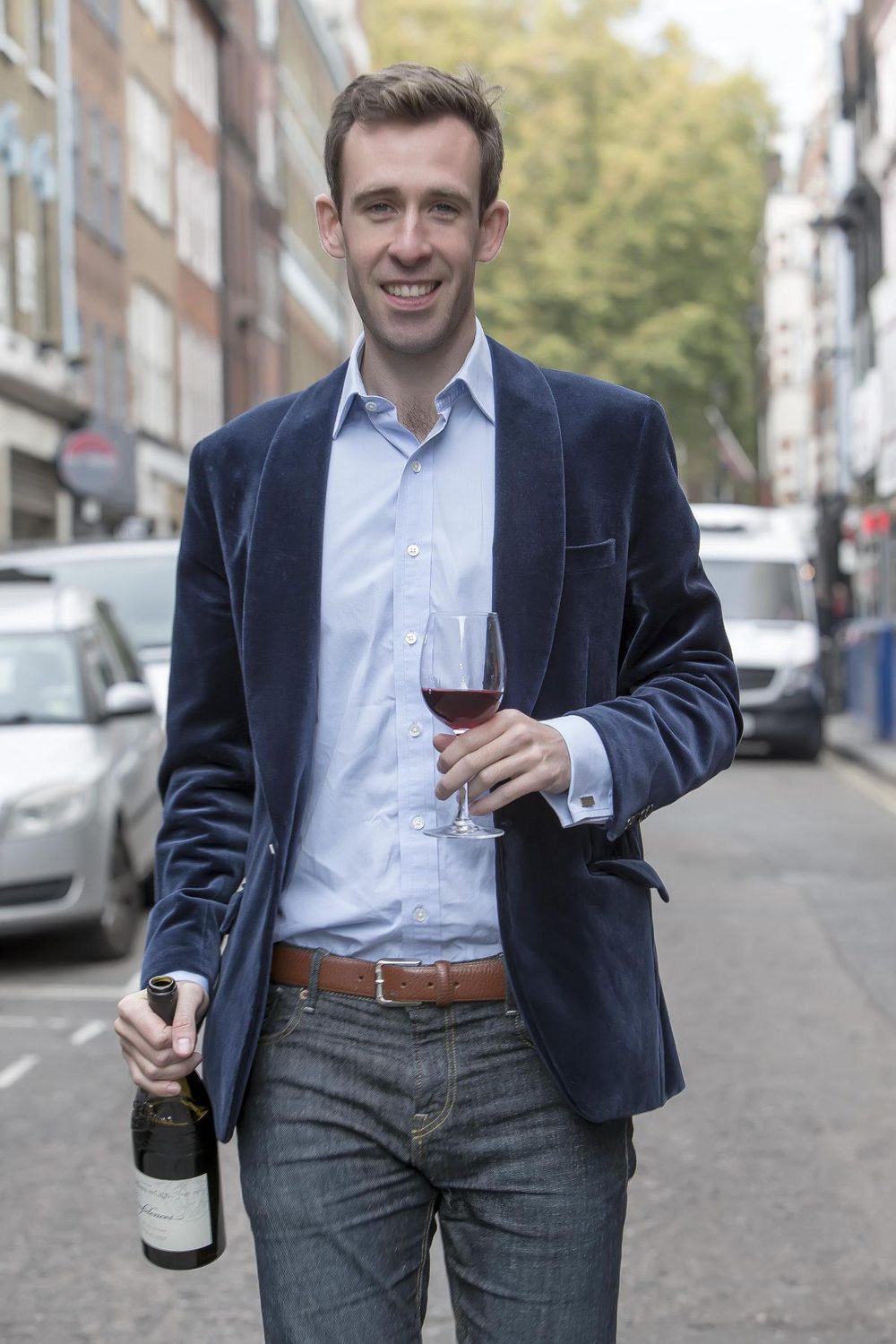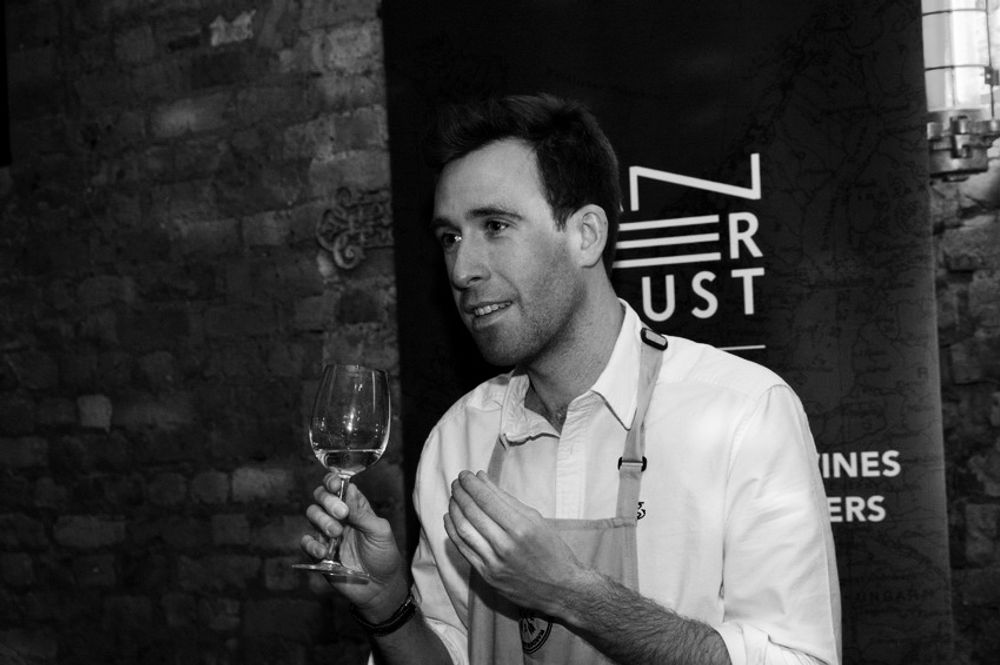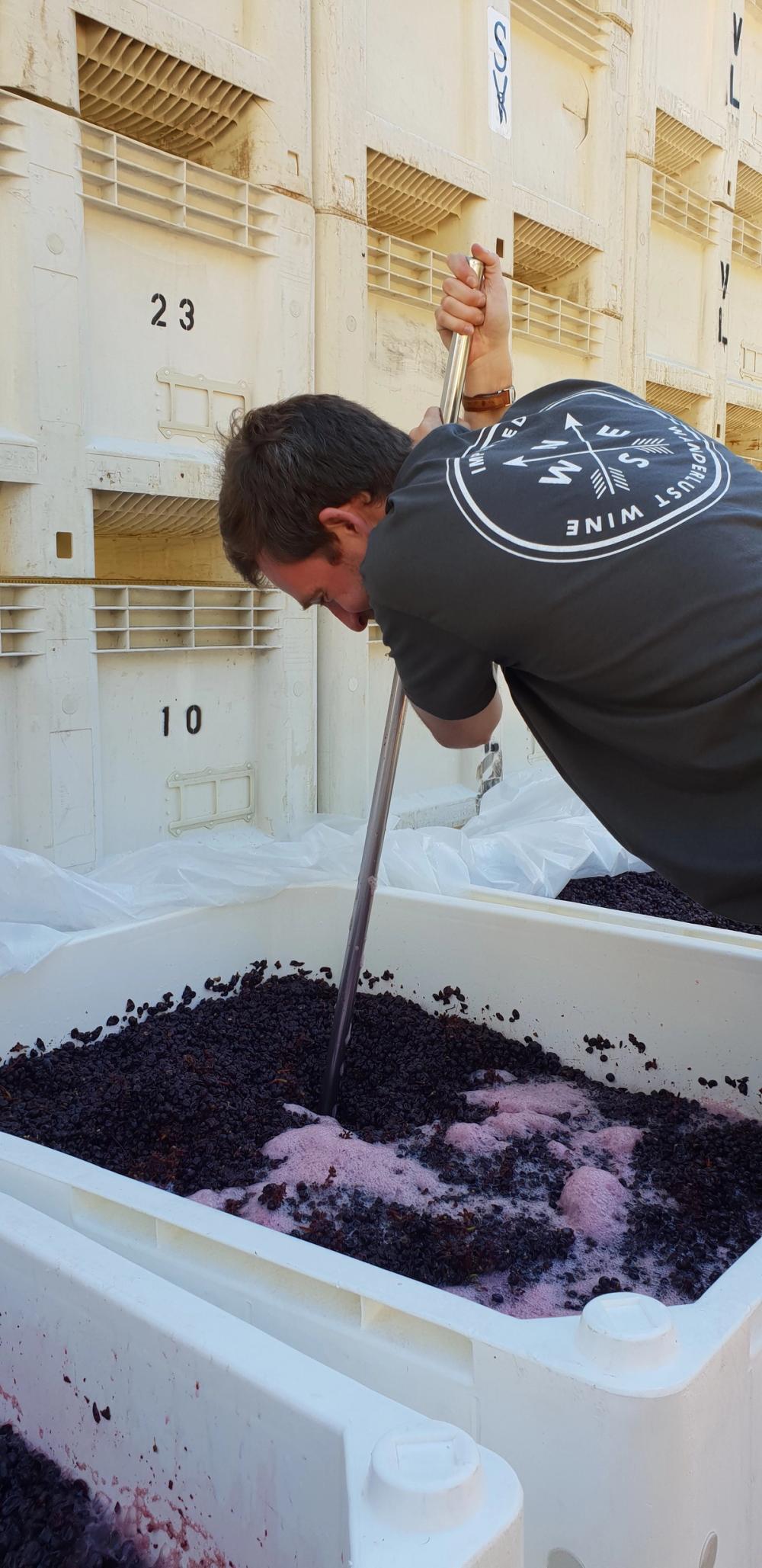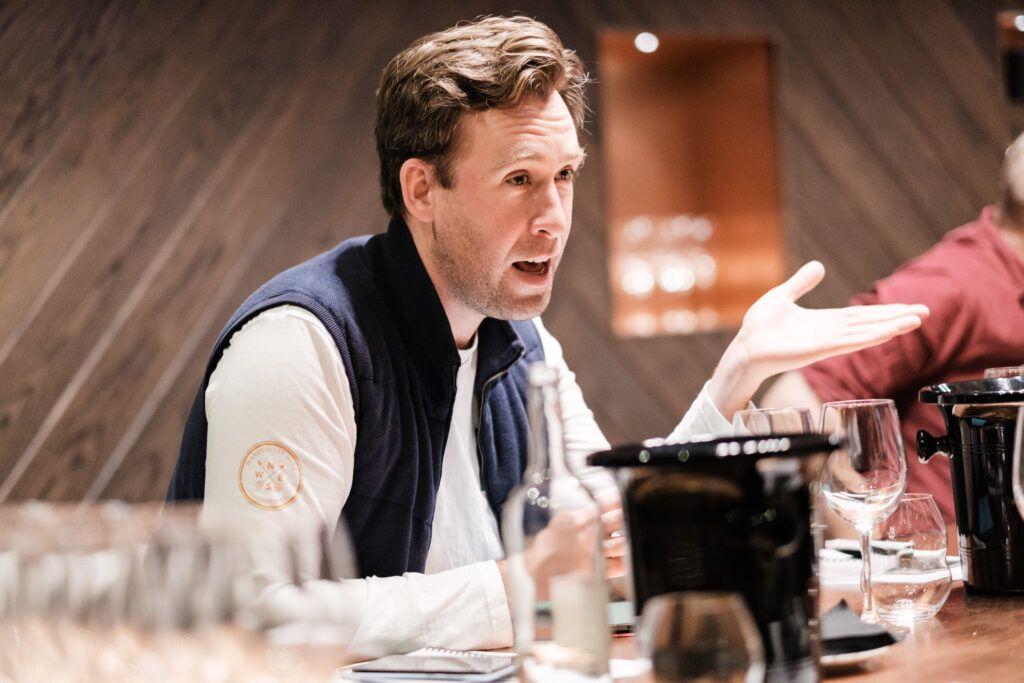Richard Ellison believes Wanderlust Wine’s technology-based business is what has enabled it to capitalise on the Covid lockdowns and major shift to online retailing the in the last two years.
Richard Ellison is in a reflective mood. It’s now been just over five years since he started Wanderlust Wine, his first business after moving away from a successful career in banking and finance. Coming from such a structured background meant he has always had a very clear business plan with tight, carefully thought through growth targets for the business. Most of which, he is happy to report, it has reached, if not surpassed.

Richard Ellison strongly believes smaller importers can compete with much bigger players by investing in smart technology
Wanderlust Wine’s business strategy has not changed in that time. Its principle goal is to search the world for off-beat, interesting, niche wines that both consumers, restaurants, and specialist wine retailers will be interested in buying. The real point of difference, though, comes in the back office and IT systems that then allow those consumer and trade customers to order online and then have their orders automatically processed by its wholesaler partner tasked with delivering them as soon as possible. Same day, or within hours if possible.
It’s what Ellison calls Wanderlust’s ‘vintech’ approach to being a wine merchant. As he explains: “I’ve used technology to power our operations; what most wine merchants do with people. We have zero operational staff, the technology does the work for us. As the banking sector has ‘fintechs’ that do this, we’ve taken a ‘vintech’ approach. This has proved invaluable through what has been five years of scaling.”
The Wanderlust model has from the outset been based on driving electronic efficiencies through combining website orders, warehouse and stock management, order fulfilment, CRM and accounting automation.
A business that has actively targeted both a trade (60% of its business) and direct to consumer (40% of sales) strategy from day one.
Channel management issues
He is quick to bat away any suggestions of channel management tensions: “Consumers buy wine through three main channels – off-trade, on-trade and online. It should be simple and easy for them and I can’t see why there should be a massive tension between the trade segments as long as everyone can earn an acceptable and fair margin.”
2021 certainly proved to be the year when wine merchants needed to have an effective, established and fully functioning e-commerce model. In fact, much of Wanderlust’s 170% growth in sales over the last year has come from its online wine club and DTC platform. A new enhanced website – with a better ordering process – has helped DTC sales grow another 20% in 2021.
“We were well set up for what was a perfect storm for online models. Having the vintech machine meant we were able to cope throughout Covid and operate with next-day delivery UK wide,” he says.
Added pressures

Richard Ellison believes investing in technology as much as the wines he has is crucial to the success of the business
But with success also comes added pressure and new challenges that even the tightest business plan had not accounted for.
As he explains: “There is no text book on how to be a wine merchant. What I have learnt is there are certain things you can think about and plan for and some things you simply can’t. You start of worrying about how much do I have to sell every month to break even. In a way when you are small then everything is beautiful – and manageable. But the more cost you take on to take advantage of extra opportunities, the harder it gets to keep on top of everything.”
Interestingly much of Wanderlust’s most recent growth has come from outside of London, which again goes against the traditional merchants’ grain.
“London is still in recovery mode. It is so up and down with when people are coming into the office that is very hard to plan,” says Ellison.
Instead it has concentrated its resources on building businesses in what have become key areas of the country – most noticeably the West Country and the South West, the beacons and hotspots for staycations over the last two years.
Wanderlust’s recent success has been built on the sheer numbers of people, with money to spend, who have either relocated or used the likes of Devon, Cornwall and Dorset as a rest bite throughout the pandemic.
It’s why Wanderlust’s sales team of four is not primarily focused on London but targeting opportunities around the country, focused mainly on the Home Counties, middle England and the south west. At least for now.
“I am looking for the right person to work for us in London. Which is a lot harder to do than in the regions.”
But he is also acutely aware that it is much harder to stand out and have a genuine point of difference as a “small to medium sized importer” in London than it is other parts of the country.
“Understanding exactly who your target demographic is in great detail is crucial in this business. You have to know what they are – and are not – looking for.”
Switching couriers
Ellison says its 170% growth in 2021 would not have been possible if he had not decided to switch couriers [he prefers not to say which one] to a new firm that could provide the right technology but also and increased level of customer service. Now Wanderlust operates all of its deliveries with real time updates on where packages are and any delays so that any queries can be quickly addressed and acted upon.
“Essentially this came from the couriers ability to have API plug and play functionality with state of the art notifications and real time updates for both trade and consumer customers” says Ellison.
“It gives you more visibility and control over your supply chain. It means you can look up and see where any particular parcel is in the delivery system at any time. You have open access to their systems and can see what is going on. It’s like how you track your car on Uber. That makes such a difference as you can immediately tell customers when they can expect to receive their deliveries,” explains Ellison. “It also means we are not having to deal so much with customer services. It has cut down the calls we are getting from customers by 80%. It all helps to oil the machine and means we are able to do so much more now with the same costs and overheads.”
Another big advantage of switching to couriers has been the recycled protective packaging- Flexi-Hex – it uses which Ellison says has seen its breakages rate drop to 0.1% of deliveries from above 1% before. “It’s made from honeycomb packaging and means you can drop wrapped bottles from as high five metres and they won’t break,” he says.
It also means it is able to keep to its pledge of same day deliveries which has been the cornerstone of the Wanderlust offer since it started.
Wine reputation

Richard Ellison has been willing to travel the world to seek out more left field producers to work with.
For all the unseen work it does to source, ship and sell wine it still needs to live up to its name and find wines that match up to people’s expectations of what unusual and different wines that Wanderlust can find.
He says it remains committed to sourcing wine from anywhere in the world as and when it finds the right producers to work with. But it has built up strong ties in key areas, most noticeably the United States where it has a growing portfolio of around a dozen wines including eight from California, two from New York State and then one each from Oregon and Washington.
“There are so many undiscovered producers there,” he says. “But you have to find people who genuinely want to be in the UK as the market is so different from the US.”
Wanderlust has also over the last year added wines from Portugal and Greece – Crete and the Peloponnese – that have helped fill out its European range.
He says he spends a lot of time talking to sommeliers and customers about where they would like to see more wines coming to them from. But deciding to go out and bring in wine, say, from Gran Canaria is a “mix of market demand and passionately believing in the wines a particular producer is making”.
“The importer and producer relationship is a lot like dating,” he adds. “If it feels strained and you don’t really get on, it’s not meant to be. If you are going to work really closely together and be successful, you need to be able to have a great relationship and have your sights and values aligned.”
He adds: “If they are new to the UK then they need to realise this is not like other markets. It’s our job to make sure they understand what the segmentation strategy and target customer looks like and then discuss how they can best succeed here. But we need them to have a clear and concise idea of what they are about, combined with realistic pricing for the UK. That helps move the conversation on much quicker.”
Growing range

Richard Ellison has come a long way with Wanderlust Wine to when he first exhibited at the London Wine Fair
The Wanderlust range has also needed to grow in order to be more in tune with what regional wholesalers are looking for, explains Ellison. It now has 68 producers on its list. “Regional wholesalers are looking for different types of wine than in London. They want more classic wines, but at lower price points. The average price per head for a bottle of wine is lower so you have to understand that. Whereas in London restaurants are looking for more interesting and non-classic wines which means you would need to have a much wider portfolio.”
Another reason for not concentrating the majority of its resources on the capital.
But again good wine buying goes back to giving and knowing what your customer base wants.
“Oz Clarke gave me some stellar advice back in my early days in the trade that if you do not know who you’re trying to sell to, and what they want, you do not really know what you’re looking for. I had the pleasure of touring Hungary with Oz and took many things from the way he assesses wine, partly down to the basics of asking what it is in the glass that gives you pure joy – however simple or complex the wine may be,” he explains.
Funding for the future
Wanderlust Wine has been able to manage its growth thanks to a series of fundraising initiatives, including corporate and private investments when it first started and then an equity fundraising campaign in March 2020 which closed 200% above its target. “We hope to be able to give a 300% return on investment,” claims Ellison and give its backers the option of either keeping their investment of selling it.
He strongly believes smaller, more fleet of foot and flexible operators like Wanderlust and its peers – he points to Graft Wine and Swig as good examples – are in a better position to achieve real growth than the big national players that are potentially swamped with overheads and find it far harder to change tack. Particularly if the smaller players are able to invest in game changing technology.
“If we want to do something different we can just do it. Now. We don’t have to wait for a week or a month to get it signed off. That’s the key difference between the bigger operators and the smaller players.”
That said he believes some wine importers also have what he calls “a small sized mentality” and have not made the investments in technology to help take them to the next stage.
It’s certainly not an accusation you could ever throw at Ellison and Wanderlust Wine.
- If you want to find out more about Wanderlust Wine go to its website here.
































